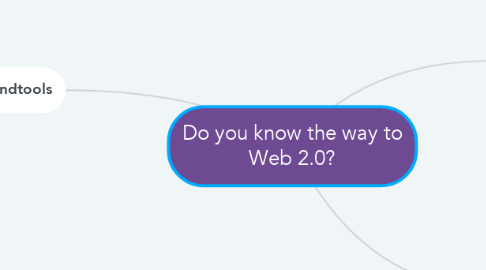
1. Mindtools
1.1. Weblogs (blogs)
1.1.1. new posts and comments are at the forefront while older posts and comments gradually disappear from the main page to an archive.
1.1.2. permalinks allow older posts to be found in the archives
1.1.3. tags (keywords) can be added to posts making them easier to find
1.1.4. in education: (Luehmann, 2008)
1.1.4.1. allow for self-direction
1.1.4.2. provide rich opportunities for reflection and meta-cognition
1.1.4.3. invite perspective making and taking through interacting with an audience
1.1.4.4. allow for knowledge brokering
1.1.4.5. support identity development
1.2. Teacher Communities of Practice
1.2.1. Conversation tools
1.2.1.1. encourage and support discussion and discourse, allowing meaningful conversations
1.2.1.2. can be synchronous (in real time like Skype or a messenger chat tool) or asynchronous (at different times like email or a forum/discussion board)
1.2.1.2.1. Asynchronous conferencing
1.2.1.3. communities for the professional development of teachers can differ mainly by:
1.2.1.3.1. the size of the community
1.2.1.3.2. the setting where the community operates
1.2.1.3.3. the composition of the community
1.2.2. reasons it's a mindtool:
1.2.2.1. the sum of its participants far exceeds the limitations of a single human mind
1.2.2.2. can be set up and used in many settings and is not domain specific to engage and facilitate cognitive processing
1.2.2.3. they can help users think for themselves, make new connections between concepts, and create new knowledge
1.2.2.4. Persons in CoPs assume different roles in different situations with participants taking responsibility for that which they can perform best.
1.2.2.5. is a concept. It is a way of thinking about and using the knowledge and experience of others so that members of the CoP can represent, manipulate, and reflect on what they know and not just reproduce what others say.
1.2.3. groups of people who share similar goals and interests, make use of common practices, use the same tools and express themselves in a common language.
1.2.4. network-based technologies have had an impact on teacher professional development in that it has reduced teacher isolation, has supported sharing, and has fostered reflection on practice (Barnett, 2002)
1.2.4.1. tech allows pre-service and novice teachers to access distributed expertise from experienced teachers, trainers and university faculty
1.2.4.2. network-based technologies can make sustained support available to these teachers
1.2.4.3. allow teachers to share experiences and techniques with others, get feedback so they can modify actions, methods, and curricula, and hear of and learn from the experiences of others
2. Keywords:
2.1. Millennials
2.1.1. those who were born into an environment where computers and the Internet were present; roughly, those born after 1982 in developed countries; also known as digital natives.
2.2. Mindtools
2.2.1. computer-based tools designed to promote higher-order, critical thinking.
2.3. Web 2.0
2.3.1. second generation Web pages and tools that typically involve interactive pages and support participation and sharing of information and resources.
3. Teacher Education
3.1. goal should be the gaining/acquisition of those competencies which allow student teachers and in-service teachers to become and remain teachers who are reflective of the decisions that they make and who are able to interact with their ever changing environments in a meaningful and responsive way
3.1.1. basically, teachers need to be life-long learners

